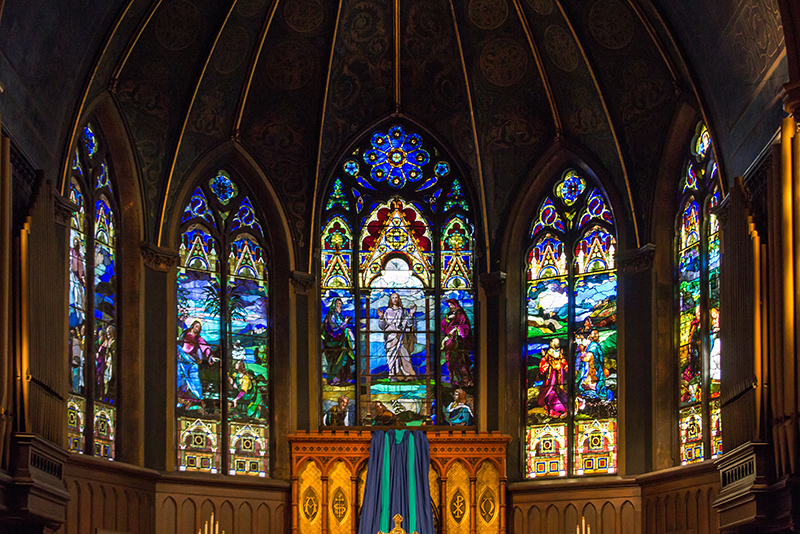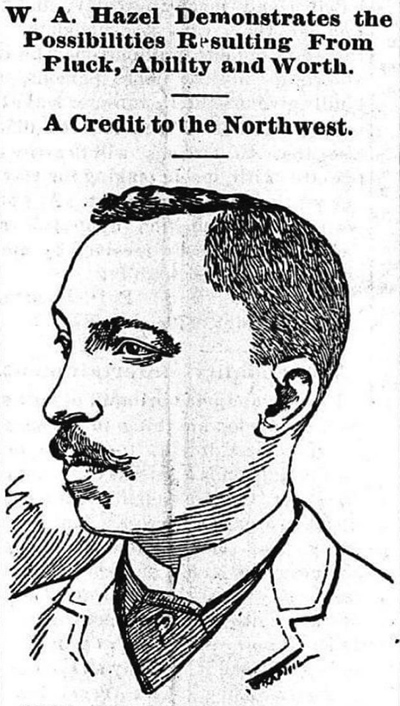Shattering Conventions: William Hazel
Stained glass artist William Hazel created works of luminous beauty

William Augustus Hazel, an African American artist of extraordinary talent and vision, left an indelible mark on the world through his mastery of stained-glass craftsmanship. Born in the late 19th century, Hazel’s life journey was one characterized by both adversity and triumph, against the backdrop of a society grappling with racial prejudice and systemic inequality.
Despite facing numerous obstacles, he emerged as a pioneering figure in the world of art, transcending barriers to create works of luminous beauty that continue to captivate audiences to this day.
Creative of color
 Born in Wilmington, North Carolina, to free Black parents, the Hazel family first moved to Ohio, and after the American Civil War, moved to Cambridge, Massachusetts, where William attended public schools and excelled at fine art. When he turned 18, Hazel apprenticed under John La Farge, a French-born stained-glass craftsman known for his innovative technique of superimposing panes of glass.
Born in Wilmington, North Carolina, to free Black parents, the Hazel family first moved to Ohio, and after the American Civil War, moved to Cambridge, Massachusetts, where William attended public schools and excelled at fine art. When he turned 18, Hazel apprenticed under John La Farge, a French-born stained-glass craftsman known for his innovative technique of superimposing panes of glass.
La Farge made stained glass windows, mainly for churches on the American east coast, and the two worked together on the stained glass at the historical Trinity Church in Boston, Massachusetts, beginning in 1878. While the church’s windows were originally clear glass, four windows were executed by the studio of William Morris and the other four by La Farge and Hazel, revolutionizing window glass with their layering of opalescent glass.
At this time, stained glass had not yet been widely adopted as a medium in the United States, and problems with shifting and deteriorating color were prevalent. La Farge and Hazel’s work included experimentation with opalescent glass, and new a technique of layering, or plating, up to eight sheets of different types, colors and magnitudes of glass, which created a brilliant effect of three-dimensionality. Opalescent glass had been used for centuries in tableware but had never before been formed into flat sheets for use in stained-glass windows. The men had to custom-order flat sheets of opalescent glass from a Brooklyn glass manufacturer.
Already a noted architect and stained-glass artist, in January 1887, Hazel arrived in Saint Paul, Minnesota, as a salesman for Tiffany and Company of New York, one of the few African Americans to work for the retail store. While uncommon to see Black artists and designers in the city at that time, he was invited to speak at local stained-glass events. Eight years later, he gained his first stained-glass commission for a newly built Catholic church in Austin, Minnesota.
Saint Peter’s African Methodist Episcopal Church in Springfield, Illinois, then hired Hazel to design 34 stained glass windows, which contained images of Abraham Lincoln, John Brown, Elijah P. Lovejoy and General Ulysses S. Grant. Unfortunately, the first church was demolished and the second was destroyed in a fire where none of the windows survived.
On the color line
 His professional achievements were as important as the actions he took against discrimination. While in Minnesota, he served on the Civil Rights Committee in Minnesota. After being denied accommodation at two hotels in Saint Paul based on his race, he sued under the Minnesota Civil Rights Act of 1885. Winning the high-profile lawsuit brought him more attention from the press and the Black community, as well as more clients.
His professional achievements were as important as the actions he took against discrimination. While in Minnesota, he served on the Civil Rights Committee in Minnesota. After being denied accommodation at two hotels in Saint Paul based on his race, he sued under the Minnesota Civil Rights Act of 1885. Winning the high-profile lawsuit brought him more attention from the press and the Black community, as well as more clients.
More than 20 years later, Hazel joined the faculty at Tuskegee Institute (now Tuskegee University) in Tuskegee, Alabama, and leaned into his role as an architect. Working alongside architect Albert Cassell, he designed and supervised the construction of five buildings on campus. He then went on to serve as the first dean of the Howard University School of Architecture in 1919. Three years later, he finished the restoration of the Frederick Douglass National Historic Site in Washington, D.C., believed to have been the first historic architectural preservation project by a Black architect in the U.S.
From humble beginnings to national acclaim as one of the first African American stained-glass designers in the country, Hazel’s story is one of resilience, creativity and a relentless pursuit of artistic excellence. Through his innovative techniques and profound artistic expression, he not only transformed glass into transcendent art but also shattered stereotypes, paving the way for future generations of African American artists to thrive in the world of fine arts.




